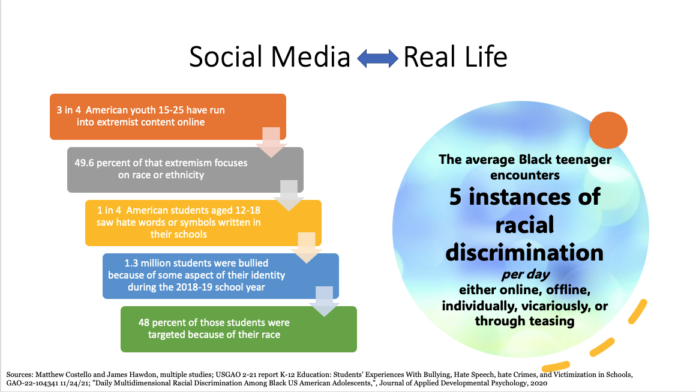Vidya Sethuraman
India Post News Service
Bullying in schools has shot up over the past five years, according to an annual survey by the Boys & Girls Clubs of America. Bullying in school seems almost an inevitable part of coming of age. Bullying takes many forms, from spreading rumors and insults to physical violence and property destruction. Technological advances have opened new ways for bullies to hide behind anonymity on the internet, too. Besides the physical, emotional and psychological tolls it takes on victims, bullying produces adverse socioeconomic outcomes
At a time when racial and ethnic relations are on edge and ever-more polarizing, and social media posts encourage anonymous cyber bullying, this week’s briefing examined what’s happening with bullying in schools today, who the prime targets and perpetrators are, and to what extent bullying incubates a culture of hate in the wider society.
Becky Monroe, Deputy Director, Strategic Initiatives and External Affairs, California Civil Rights Department said California and Federal law require that schools provide all students with a safe, supportive and inclusive learning environment, free from discrimination and harassment.
Schools have a legal obligation to ensure that students are not denied opportunities, treated differently, discriminated against, or harassed because of their race, color, or national origin, gender, gender identity, sexual orientation, religion or disability. Schools must have policies and procedures to prevent and address harassment based on protected characteristics and must ensure equal opportunities for all students. When bullying is an act of hate and acts of hate prevent a student from going to school free from discrimination, students have civil rights that can be enforced.
Anahí Santos, Youth Wellness Coordinator, One Community Action, emphasized that some extremist groups use online platforms to create racist emoticons or short videos to young people. This has had a long-term mental impact on many students who lack critical thinking. The psychological impact of social media on young people is huge, and schools should help students identify prejudicial content.
Data shows that three-quarters of American teenagers aged 15 to 25 have read radical remarks on the Internet, and nearly half of the content is related to race. One in four students has seen hate symbols at school. Of the 1.3 million victims of bullying reported in the 2018-19 school year, nearly half were blamed on race.
Mina Fedor, Founder and Executive Director, AAPI Youth Rising said the pandemic has exacerbated hatred and discrimination against the Asian and Pacific Islander community. She said that the Asian and Pacific Islander community is actually highly diverse, but it is still subject to stereotypes and hatred.
Any victim of or witness to a hate incident or crime in California can report it and receive support any time by reporting online here. You can also call 833-8-NO-HATE; (833) 866-4283 Monday – Friday from 9:00 am – 6:00 pm. If outside of those hours, you can leave a voicemail, or you can call 211 to report hate and seek support. You can currently submit reports online in 15 languages and, when calling the hotline, you can get access to support in over 200 languages. Callers will be connected with a professional trained in culturally competent communication and trauma-informed practices.







